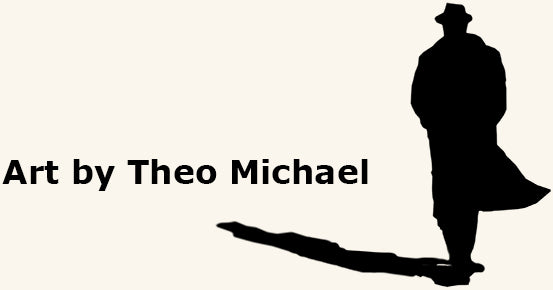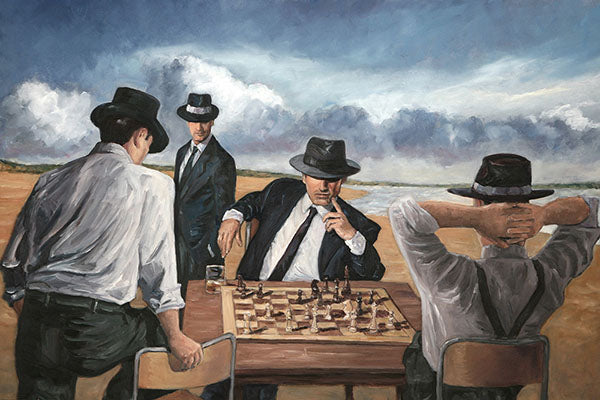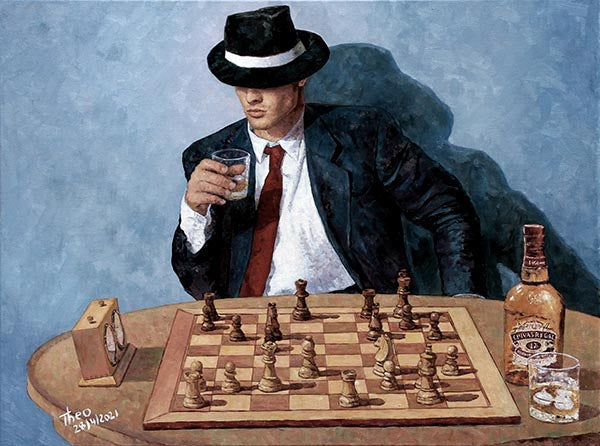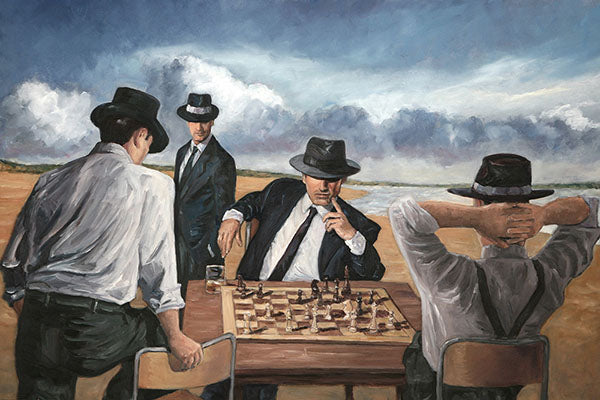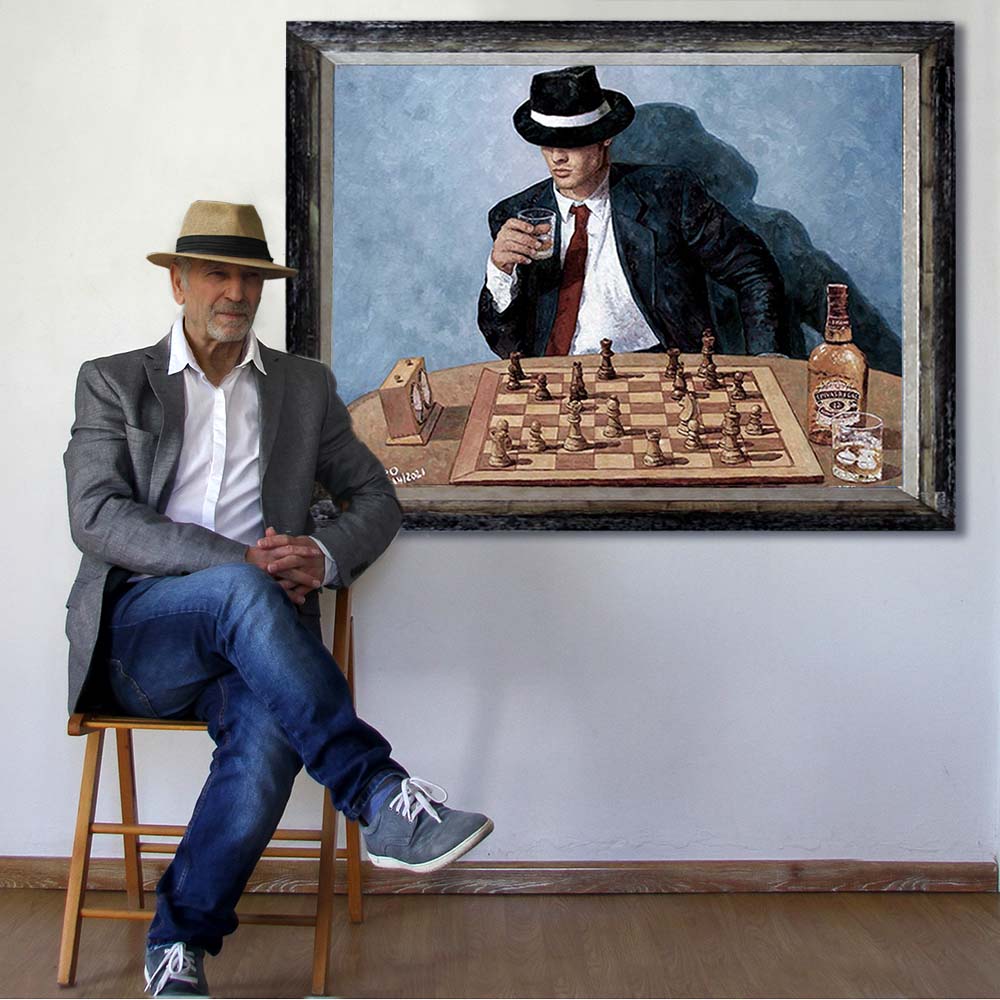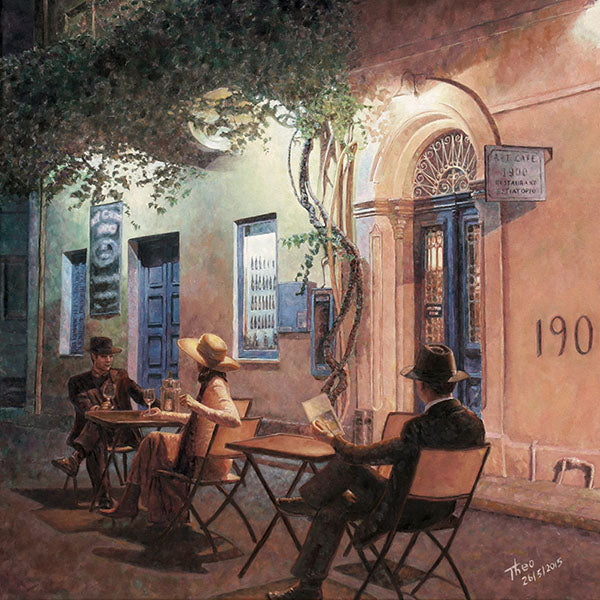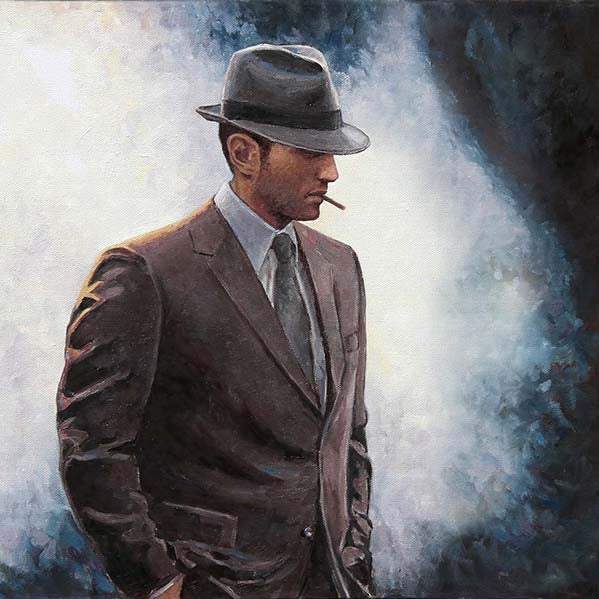Chess Art
Chess is one of the world’s most popular games. It echoes through the ages of history as a metaphor for human interpersonal relations and advancement. It has embodied our appetite for conquest, while challenging us with its unique complications and avenues to victory or defeat. It has stood up as a past-time that is ageless and as popular today as it has ever been.
Even with the cyber-age introduction of video consoles and games that are hyper realistic and excitingly complicated, people still play chess. In fact it would be fair to say that people will always play chess. It is a vital part of our humanity and speaks to our basic nature in ways that, perhaps, no other game ever has.

Eugene Delacroix Arabs Playing Chess 1847-1849
Garry Kasparov
In the past one hundred years chess has remained a vital part of our culture. For example, the Russian chess grandmaster, Garry Kasparov, and his various battles and conquests against human and non-human opponents. The much publicized Kasparov holds the record for the longest time running as the number one player in the world. He embodies legendary status amongst chess fans worldwide largely due to his battles with Deep Blue, a chess playing machine created by computer scientists. In 1997 Deep Blue became the first computer to beat the reigning world champion, Kasparov, under standard time controls. Today Kasparov’s noteworthiness in popular culture is evident, and that speaks to the popularity of the game. After retiring he devoted himself to politics and writing and is currently chairman of the Human Rights Foundation.
Chess Paintings
Like everything that is a prominent part of culture chess has been captured in art through the ages. Rarely will you find a symbol of greater power than chess in art. It encapsulates something essentially human to us in its inherently combative and yet strategic setting. Immediately, in paintings and also in writing and poetry, the situations presented are enhanced with a depth and focus. The game expresses what is going on beneath our veneers. It asks us questions, and involves us in ways that few other artistic symbols can.
Chess became an inspiration in the arts soon after the game spread throughout the globe in the Middle Ages. In the 15th and 16th centuries many works of art used the game as a center piece. As the game continued to thrive, Ludovico Carraci created I Giocatori di Scacchi (The Chess Players) (c. 1590),

Eugene Delacroix created Arabes jouant aux échecs (Arabs Playing Chess) and Thomas Eakins created The Chess Players (1876) to name but a few. In the 20th century Marcel Duchamp created Portrait de joueurs d'echecs (Portrait of Chess Players) (1911), and Henri Matisse created Femme à côté d'un échiquier (1928).

Thomas Eakins, The Chess Players 1876
Chess Paintings by Theo Michael
It’s with this sentiment in mind that Theo has created works of art involving the game that are similarly inspired. Theo’s fascination with chess comes from his teenage years when he regularly played games with his father, along with another board game, the game of draughts. Theo continued to play with his brother, and brothers in law throughout the decades and developed a passion for the game and its various strategies of defense and attack.
As an artist he saw the essential depth of the game. The moves made by an opponent said something about them and their personality. He saw that beyond the confrontation chess was asking deep and searching questions about who we are as players. Are we brave and reckless? Or are we cautious and defensive? How far ahead are we thinking with our movements, or, by contrast, are we simply thriving in the moment? Over time Theo was able to truly appreciate the artistic metaphor of the game and how that related to our humanity in the wider world.
So as an artist and a painter it was always going to be a matter of time before chess would appear in his repertoire of work. Theo first created The Chess Players in 2009.
